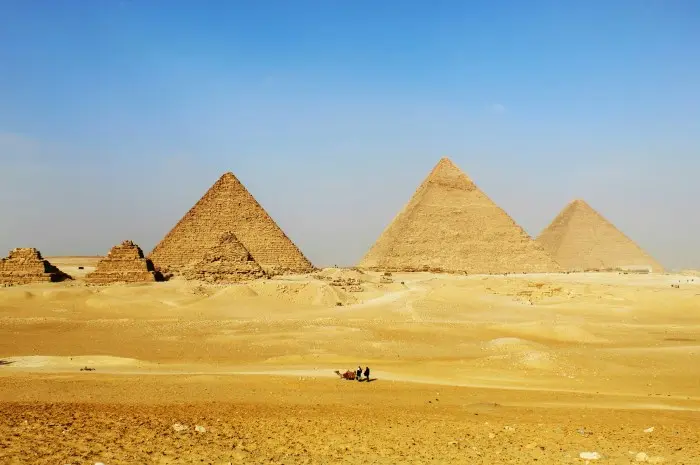
Discover the timeless mysteries and architectural marvels of the Egyptian Pyramids, a UNESCO World Heritage site steeped in history and wonder.
The Egyptian pyramids stand as monumental tributes to the ingenuity and cultural sophistication of ancient Egypt.
Rooted in antiquity, these architectural wonders continue to captivate scholars, tourists, and historians alike, drawing millions from around the globe to gaze upon their storied facades.
This article delves into the mysteries, history, and exploration of these ancient masterpieces.
1. Origins and Historical Significance
The tradition of pyramid building began in Egypt around 2700 BC and continued for nearly a thousand years, during the periods known as the Old and Middle Kingdoms.
These structures were primarily built as tombs for pharaohs and their consorts.
The earliest known “step” pyramid for Pharaoh Djoser, designed by architect Imhotep, marked a significant evolution from previous rectangular mastaba tombs to an iconic superstructure that would characterize ancient Egyptian architecture.
2. Architectural Marvel of the Giza Complex
The Giza pyramid complex, just outside Cairo, houses the Great Pyramid, built by Pharaoh Khufu.
It is the largest and oldest of the three pyramids on the Giza plateau and the only surviving structure of the original Seven Wonders of the Ancient World.
Alongside Khufu’s pyramid are those of Khafre and Menkaure, each accompanied by smaller queen’s pyramids, causeways, and valley temples that align with stellar constellations, showcasing an advanced understanding of astronomy.
3. Construction Techniques
How these pyramids were constructed remains one of the great archaeological mysteries.
Theories suggest a workforce of tens of thousands—laborers, artisans, and skilled workers—who used logs, sleds, and primitive tools to move and set enormous limestone and granite blocks.
Recent discoveries of a workers’ village and large ceremonial structures suggest that the builders were well-fed and housed in what was likely a highly organized project overseen by the state.
4. Religious and Cultural Symbolism
The pyramids were more than just tombs; they were part of a larger religious and cultural belief system that emphasized an afterlife where the pharaoh, as a god, played an intermediary role between the gods and the people on Earth.
Intricate burial chambers inside the pyramids, filled with treasures, hieroglyphics, and mummified remains, were designed to guide and protect the kings in their journey to the afterlife.
5. The Sphinx and Valley Temples
Adjacent to the pyramids, the Sphinx, a limestone statue with the body of a lion and the head of a pharaoh, believed to represent Pharaoh Khafre, guards the plateau.
The Sphinx and the nearby valley temples form an integral part of the pyramid complex, contributing to the grandeur and mystical aura that surrounds these ancient relics.
6. Modern Explorations and Discoveries
Despite centuries of excavation and research, the Egyptian pyramids still yield new secrets.
Modern technology, such as 3D modeling, infrared thermography, and drone photography, has uncovered new chambers and passageways.
These methods allow archaeologists to explore these ancient structures without disturbing their integrity.
7. Conservation Efforts
The pyramids face threats from urban sprawl, pollution, and the harsh Saharan climate.
Conservation efforts are continually underway to preserve these monuments for future generations.
These include controlling humidity inside the pyramids, managing tourist access, and ongoing restoration projects funded by international and Egyptian organizations.
8. The Pyramids Today: A Tourist Attraction
Today, the pyramids attract scholars and tourists alike, who come to marvel at their historical and architectural significance.
Light and sound shows, guided tours, and camel rides offer visitors a glimpse into the past, making the Egyptian pyramids one of the most beloved and enduring symbols of ancient civilization.
Conclusion
The Egyptian pyramids, magnificent and shrouded in mystery, continue to be a source of fascination and awe.
As symbols of Egypt’s rich history, they remind us of the country’s ancient past and its contributions to world heritage.
Whether viewed as an archaeological site, an artistic triumph, or an astronomical feat, the pyramids are a lasting legacy of humanity’s enduring desire to reach towards the heavens.


